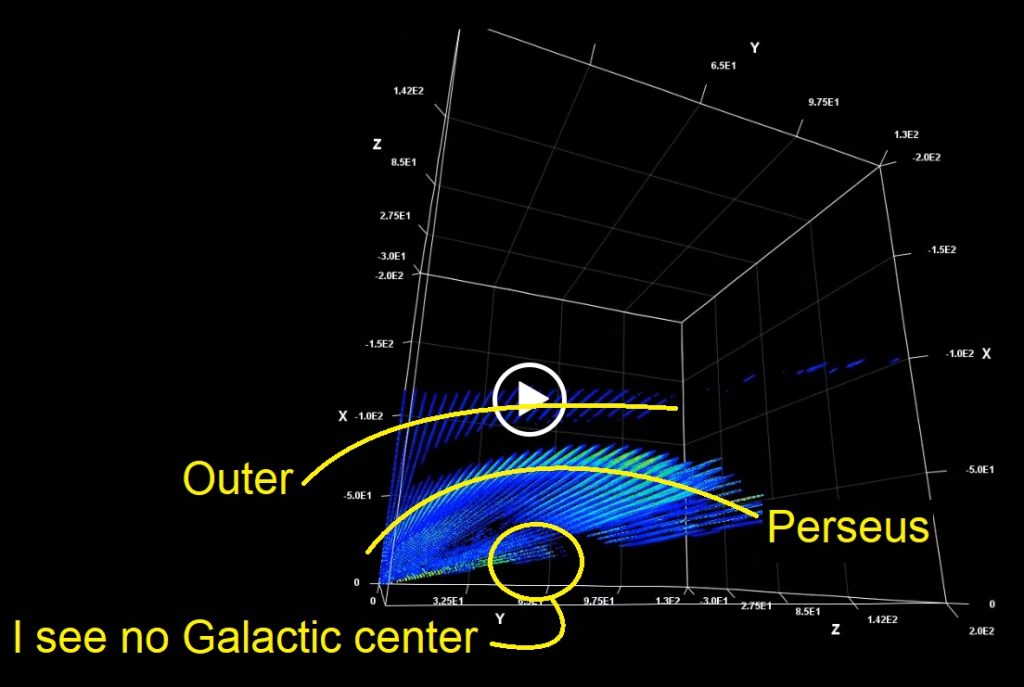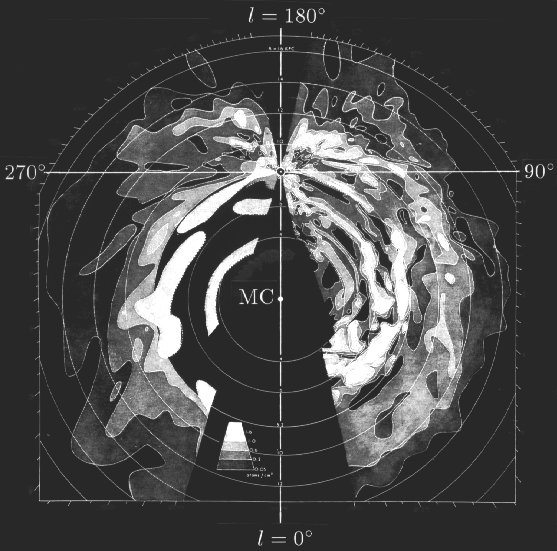Fly-through of 3D plot of Milky Way Spiral Arms created using data from LRO 1, 2 and 3 radio telescopes from start of data collection to 17 August 2025 (extended 3D slices version 2 September 2025)
Compare the 3D results below with 2D map using same data:
Comment from Ted Cline:
Hi Andy, I think you believe in my programming too much. In those calculations, ezRA decides the distance to the hydrogen cloud using a “tangent velocity” geometry trick. And only valid for GLon 0 to +90 ? I expect that trick starts to fail away from the Galactic plane. That may distort the calculations, and create a curved surface . I have used ezGlon to study only as far as GLat -10 to +10 degrees. Your 3d movie appears to have GLat from -15 to +60 degrees. Yes, in your data, I see a faint blue outer arm, and I see a bright Perseus arm, although I see nothing in the Galactic core. I do not believe much of what is seen away from the Galactic plane. I never envision the Galactic arms as seen from the southern Galactic hemisphere. I question combining the data from different telescopes. I expect each telescope system to have different power levels? I have not thought this out, but there are levelling adjustments available to the ezCon command line. SHOOS will eventually need to address this multiple telescope data merging. Ted.
Ted’s annotation of a screenshot from my fly-through video:

Comment from Jason Burnfield:
My guess is the math breaks down at galactic longitudes near the galactic core (and also at the rim).
You can see “blackout” areas near 0 and 180 degree galactic longitude even in Jaan Oort’s original mapping for this very reason ( both images below are versions of that map). It’s impossible to extract useful tangential velocity information when the motion is completely orthogonal to your line of sight.


Further comment from Ted Cline:
Hi Jason,
Using your second attached image of Oort’s Galactic mapping as an example, why is the side near 270 degrees GLon always less detailed? Are we troubled by looking through an obscuring “veil” of some nearby Galactic arm? Or because it requires an antenna on Earth’s southern hemisphere? I figure the Galactic centre is too opaque (with dust?) to study. Or the Galactic centre’s hydrogen is energized, and not H I, so no 1420 MHz to detect?
I see the “Zone of Avoidance”,
https://en.wikipedia.org/wiki/Zone_of_Avoidance
and the “Zona Galactica Incognita”, says Figure 5 text of
https://www.tandfonline.com/doi/epdf/10.1080/21672857.2017.1379459?needAccess=true
Ted.